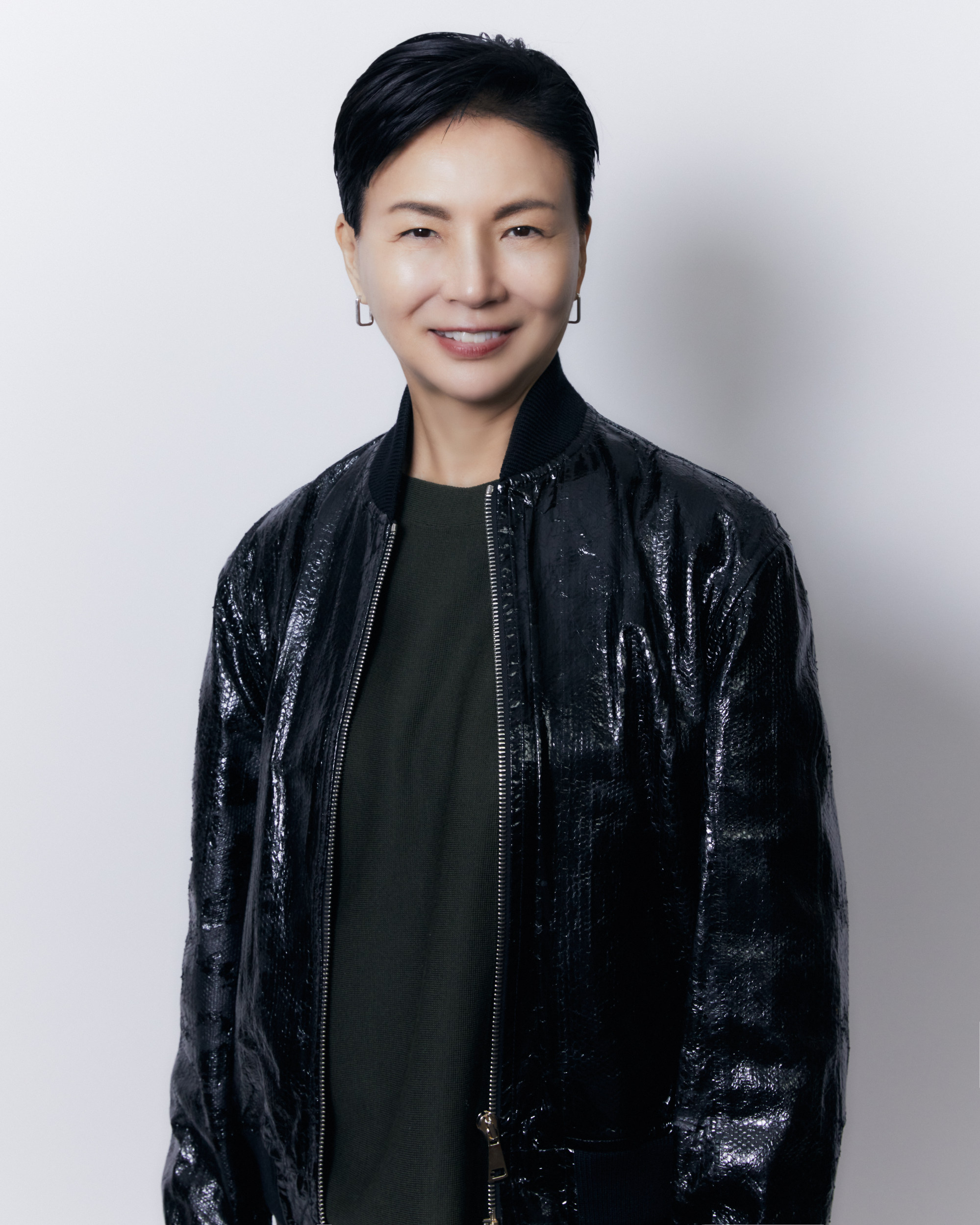
Colour-changing AI textile used in fashion brand’s Milan show and developed in Hong Kong could ‘revolutionise the way we approach design’
- Anteprima’s February show at Milan Fashion Week featured colour-changing garments and a glowing handbag made with an AI textile developed by Hong Kong’s AiDLab
- A new feature released in June allows wearers to extract colours from photos on their phone to be displayed on the fabric
When Hong Kong brand Anteprima showed four glowing, colour-changing knitted garments and a glowing handbag at Milan Fashion Week on February 23, it was a sign another industry was ready to embrace artificial intelligence (AI) to offer customers something new.
The innovative material used, developed by the Hong Kong-based Laboratory for Artificial Intelligence in Design (AiDLab), is the world’s first contactless gesture-recognition illuminative textile and has a patented structural design made of polymeric optical fibre.
The textile, which has an integrated camera that processes images using AI algorithms to produce different coloured illuminations, can be controlled via hand and body gestures, Bluetooth, or remote control.
Its incorporation in a knitted material that is soft and tactile allows it a wide range of applications.

“Conventional textiles are passive. We wanted to create a material that adapts to the fast-evolving needs of today’s consumers,” says Dr Jeanne Tan, associate professor in the School of Fashion and Textiles at the Hong Kong Polytechnic University, and the assistant director of AiDLab, who leads the research team behind the textile.
“Our team used various technologies to enable interaction, such as AI in the forms of gesture recognition and user-friendly apps. The goal is to create a textile material with real-world applications that can be accessed by people of all abilities.”
The bows are back in town: brands and stars celebrate feminine fashion
Tan says material has good tactility and the ability to intuitively interact with users to enhance their everyday experience.
The result is a stretchable, machine-washable knitted polymer-optical fibre textile that allows customisable colour illumination and also has an environmental edge.
“It’s knitted into shaped pieces ready for assembly if applied to products, so there is less waste than the conventional cut-and-sew methods of woven textiles,” Tan says. “It can also be knitted on industry knitting machines, which makes the production scalable.”

The versatility of this AI-powered material has attracted the attention of the luxury industry, highlighted by Anteprima’s debut of its autumn/winter 2023 collection at February’s Milan Fashion Week, which included items made of the material.
“This innovative material presents a unique opportunity with the combination of advanced functionality and aesthetic appeal, making it an exciting choice for a forward-thinking collection to push the boundaries of fashion design,” says Izumi Ogino, Anteprima’s Japanese founder and creative director.
Ogino says she used the textile’s properties to “integrate subtle lighting elements and interactive features into the pieces” for the collection, which drew from “organic shapes, fluid lines and the concept of movement”.

The textile’s innovative properties, she adds, have allowed for new possibilities in terms of texture, drape and versatility.
By showing off the textile at Milan Fashion Week, Ogino has helped introduce an innovative Hong Kong-developed fashion product to the international fashion stage.

While exciting, the collaboration between AiDLab and Anteprima was not without its challenges.
“Working with a new and innovative textile that had not been extensively tested or used before required thorough research and experimentation to understand the fabric’s properties and limitations,” Ogino says.
“It involved collaborating closely with the engineers and technicians to ensure that the fabric could be incorporated seamlessly into the designs while maintaining its integrity.”

Tan adds that the design process was also not easy.
“Designing the systems, in terms of the algorithms and other components, was challenging,” she says. “As the original illuminative technology was not intended for textiles, the team had to constantly adapt, refine and invent new ways of integrating the technology in a non-intrusive manner with a good hand feel.”

The innovative collaboration is likely to be a fruitful one.
“The fashion world’s reaction was overwhelmingly positive,” Ogino says of Anteprima’s collection at Milan Fashion Week.
“Industry professionals and fashion enthusiasts were intrigued by the incorporation of the new textile and its potential to revolutionise the way we approach design, as it showcased the possibilities of merging fashion with cutting-edge technology.”
Why do Gen Z still love Y2K fashion? Thank TikTok, stars like Bella Hadid
In May, the intelligent textile won Germany’s iF Design Award, a globally respected accolade that has championed design excellence since 1954.
And in June, AiDLab released a new feature that allows wearers to extract colours from photos on their phone to be displayed on the fabric.
“This feature was inspired by Instagram and the lifestyle of the contemporary consumer, who documents their life with photographs,” Tan says. “Instant fashion inspirations from real-world experiences.”

